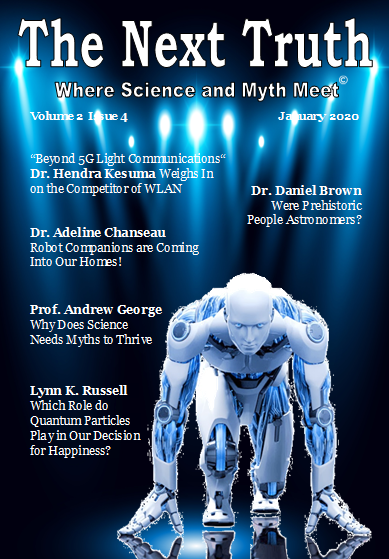Three Days of Hell on Earth!

2008 was the year that I typed the first story telling words on my laptop and I felt proud when I saved the word document. It took me 6 years after that before I wrote my first scientific lines for a booklet having only 95 pages and it t took me 3 years more before I wrote my very first scientific article. A real crappy one compared to my latest publications. Really, it was that bad, I cannot edit this myself anymore! And yes, I still have the article what bears the title, “Tachyon; the Leading Element in Evolution? “
Nevertheless, holding the home printed version of my very first scientific article I felt like standing at the top of the Mount Everest. I had reached the top of my writing skills! Hum, I was wrong. Standing on that mountain a helicopter flew over and the pilot informed me that I was not on the mountain I thought I was on—apparently that is a few hundred kilometers in a different direction. How did I end up here? Not to worry, I can tweak a couple of parameters and then apply my insights to the actual mountain I was standing on—assuming it is actually a mountain—has anyone checked?
After all those years of writing it turned out that I was just starting. 2 more years of struggling and pushing the boundaries in learning more about the scientific fields and how to find the correct words which are expressing both the complexity and the beauty of contemporary science, was what I still had in front of me.
Today, anno 2020, 4 books, 17 published issues of The Next Truth and over two dozen articles can be added to my leaning process. But have I reached that point in where I have aced my writing skills? May I tell myself that I am allowed to look out for the highest point of the Mount Everest?
In the second week of January 2020 I received an email from IWMF (International Woman’s Media Foundation) what stated that several grant proposals had been opened that provided me the opportunity to submit my proposal. Even this feeling of ‘is my English sufficient enough for this’ started to overpower me I was eager to start. So, I opened the form and, when scrolling to the bottom, I found that I needed two professional references. SH*T!
It took two days but I found two people willing to act as a reference. Yes…fantastic! Thank you so much. And so, the next day I started to write but what I did not knew in that euphoric moment was that writing this grant proposal turned out to become 3 days of pure Hell on Earth!
My surrounding did not understand me. Why was I putting in these tremendous efforts for something which I probably would not get anyway? “It is an uncertain factor, a waste of time! So, why all these efforts for nothing?“ Because I believe in myself, that is why!
Three days passed by of writing, rewriting and pushing my own boundaries…again because this was not the first time that I wrote into a grant proposal. I felt alone, not understood and my brain was slowly turning into something that looked like crumb cake. The moment I finally clicked the ‘submit‘ button, what was about 01:30 in the morning, I could no longer distinguish the letters from the words.
Three days after I started writing my grant proposal, I found myself staring at my computer screen reading these words “Your application has been submitted successfully” over and over again. There I was, tired and alone in the middle of the night and…I cried. I felt relieved, exited and shitty at the same time while dealing with these thoughts of not being selected as a candidate for this grant. People will say…”You see, it was all for nothing. You are just not good enough!”
Now, you can say, “Ah, there is that female thing again“, but in my opinion, these feelings are logical and normal. It does not show weakness, as some might think of that moment in where someone is expressing his/her emotions and/or thoughts; it shows that you are human first.
For those who write into grant proposals on a regular base, regardless the topic and financial amounts involved, you have my full respect because you have giving more then 100% of yourself.
The Well-Known WLAN Has a Competitor: Beyond 5G Light Communications.

By Maria Anna van Driel, www.nexttruth.com
The history of Visible Light Communication (VLC) goes back to Romans when polish metallic plates were used to reflect sunlight and convey signals over a long distance. In 1753 an anonymous author wrote about a communication devise what would let your words magically appear on a piece of paper thousands of miles away; the telegraph. In 1794, Claude Chappe developed a semaphore system consisting of a series of towers equipped with mounted arms to transmit information. Until 1855 this form of communication underwent an intensive evolution. The Pony Express became about as useful as mobile pager would be today. But scientific progress did not came to a halt, on the contrary, long distance communication got more and more improved.
It was on February 19, 1880, when the Scottish-born scientist Alexander Graham Bell invented the photo-phone. This, for its time, anticipatory technological device could transmit speech on modulated sunlight over several hundred meters. It was the idea of Graham Bell what turned all known communication up-side-down and even led to fibre optic communication. Then, in 1935, the EPR-paradox was presented by physicists Albert Einstein, Boris Podolsky and Nathan Rosen. But it wasn’t until 2003 before the term VLC was coined first by Nakagawa Laboratory at Keio University, Japan.
Nowadays, getting information from one place to another is not a far cry compared to the days of the Pony Express. WLAN is a familiar thing and almost everywhere in the world. But, as with all ‘new’ inventions, there is a limit in the range with this well-known way in transmitting data. Some buildings, or places, do not allow data to be transmitted wirelessly everywhere due to its materials present or altitude when looking at traveling by airplanes.
Luckily due to the increasing interest of plausible new opportunities in VLC, researchers have found a way to realize this jaw-dropping form of high speed wireless communication by copying natural light and narrowing its waves. Expect for the data transmitting, what provides us to opportunity to read our emails, set up a Skype call or Wikipedia articles; there is another variant of VLC. This is where Dr. Hendra Kesuma comes in.
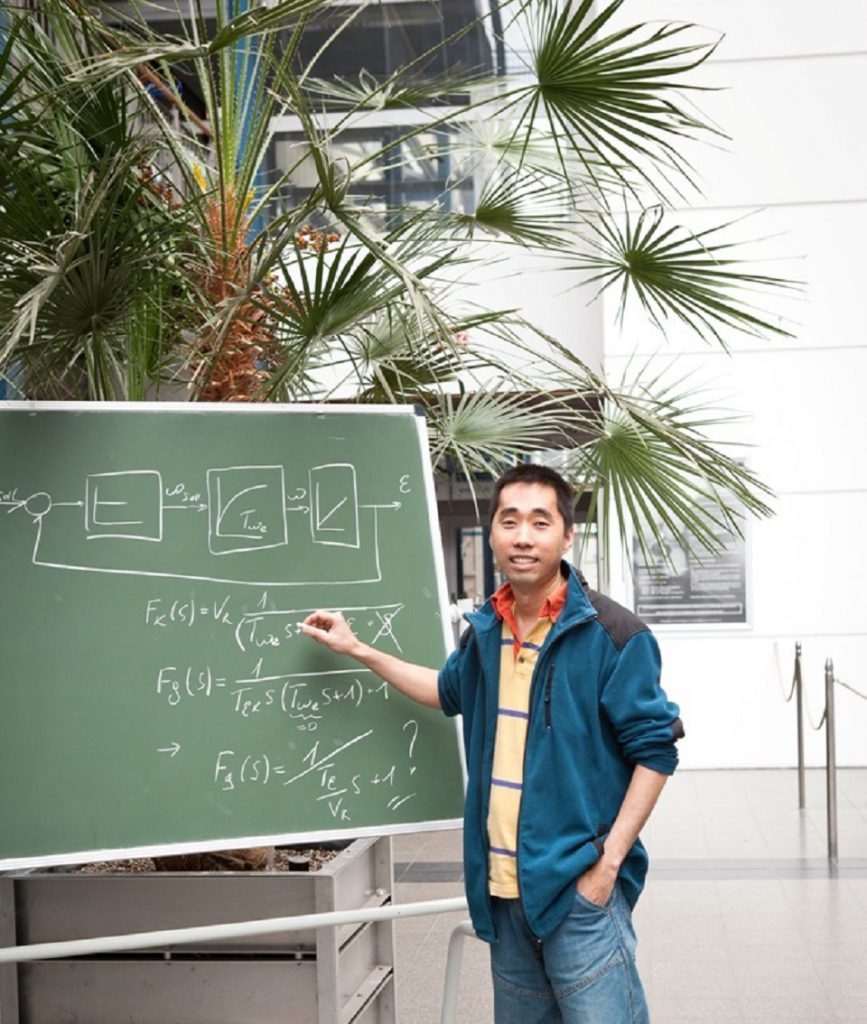
Dr. Kesuma, 42, is an electrical engineer and is currently serving as Research and Development Manager at AES Aircraft Elektro/Elektronik System GmbH and is working closely with Airbus and University of Bremen to create new solution for European Aerospace Industries. Three years ago, he began to untangle the long-standing puzzle of how to provide a healthy food supply for deep space missions. He and his colleagues have developed a low power and protracted way form of Visible Light Communication with beyond 5G capability what let plants grow in zero gravity and devices communicate with each other.
Dr. Kesuma’s work began in the realm of pure engineering, but unlike most engineering advances, which might find a practical use after decades, his work is already being applied by physicists. In particular, extreme high speed visible, and infrared, light communication in combination with LED bulbs as energy source for growing plants in space.
“It is very expensive for humans to work on experiments for plants to grow in a space station and so we came up with an idea of using light what provides plants to create their own photosynthesis. These plants are then a sustainable food supply for deep space missions,” Dr. Kesuma explains during an interview at Space Tech Expo 2019 in Bremen, Germany.
“During a 2 years experiment at Airbus in Columbus (ISS-module) Bremen, we have used white and infra red LED light to create regularly repeated sequence of an artificial day and night to let the plants grow but we had to keep out the insects and any bacterium’s in order to allow the plants generate their own CO2 and oxygen,” Dr. Kesuma added.
So far, so strange, but undoubtedly real! But how is it possible to transmit so much data only through light signals and, in the future, communicate faster than 5G communication? Dr. Kesuma and his colleagues have developed a very interesting research approach in an internet communication from the lamps hanging at the ceiling for devices to receive and transmit signals whereby the current highest speed with infra red LED is reaching 1Gbits per second.
“The advantages of this system compare with Wi-Fi is that, if we have one Wi-Fi with bandwidth of 1Gbits per second seconds and if we have 100 users, it means per user, it just get 10 Mbits per second,” Dr. Kesuma said.
Indeed, we are talking about the possibilities and exciting consequences of the property called communication with quantum entanglement. This technology shall be suitable for a zero delay in communication between Earth and other planets and/or moons.
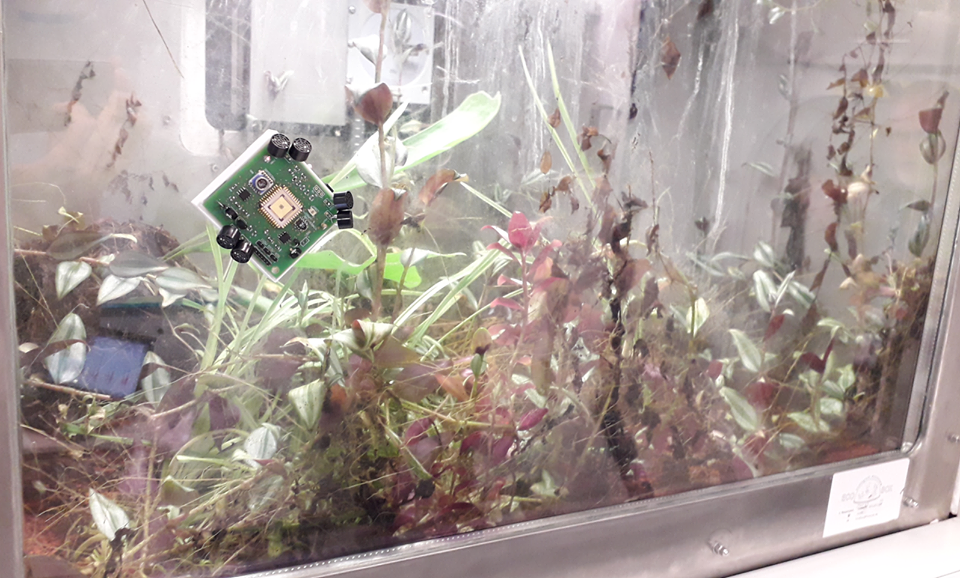
The transmission principle of visible light communication is relatively simple: a high-power LED is switched on and off very quickly using a modulator. These light impulses all happens too fast for the human eye to notice but are captured by a photodiode in the receiver device (a laptop, tablet computer or cell-phone) and converted into a string of electrical zero’s and ones – in other words, the language of computers.
“The VLC Beyond 5G technology, which I labeled as so because 6G standard is still in progress, allows the LED light to provide the communication between devices through its camera and sensors so they can use the cloud computing in order to deal with automated farming in an international space station or future space garden as an orbiting capsule,” Dr. Kesuma said.
“This technology, Dr. Kesuma proceeds, is also suitable for hospitals and aircrafts because it does not pose electromagnetic radiation. Beside of that it is also very reliable to provide high speed communication though the light bulbs on the warehouse ceiling to control autonomous industrial robots. The reliability and the speed of the wireless communication make it possible to have computation done in the server rather than in individual robot. Hence each robot needs less computational power and can be coordinated simultaneously from the server.”
And so, after researching it for years, scientists are extremely close to launch a new technology in Visible Light Communication for devices to communicate with each other and for us to surf the web by using light. This makes commercially available LEDs a viable alternative to conventional wireless network access in situations where radio communication is not desired, or to give people relief from electromagnetic rays and electric smog.
For more information on Dr. Hendra Kesuma and his research www.bremen-dynamics.com

The very first publication of “The Next Truth; Young People Science” is available online!
Welcome to the very first publication of The Next Truth; Young People Science magazine. I am very excited to present this new, bimonthly publication to you and hope that it provides you with compelling content and inspiring and thought-provoking topics. https://www.magcloud.com/browse/magazine/1512517
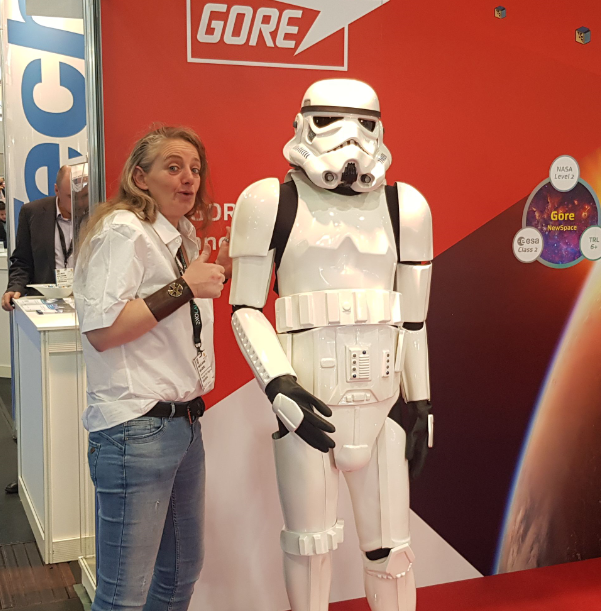
http://www.magcloud.com/browse/magazine/1512517
Young People Science is focusing on the next generation male and female doctors, engineers, teachers, psychologists, chemists, physicists, among others, to unlock their fiery enthusiasm and thus their brilliant minds. In other words, we have created this magazine for…YOU…to let your imagination roll free, to explore the wonderland of science and to let your inner genius escape.
The first “Young People Science” contains articles dealing with a few of the many different scientific fields out there and are written by scientists and citizen scientists in a funny and understandable language. These brilliant minds are showing you that this idea of science being boring is (obviously) a superficial surface level thought. How can science be boring when by, for instance, simply using an equation written in a single line, you can predict that ‘stuff’ can happen?! Science is definitely not boring. The most interesting people I have come across are these brilliant man and woman who are known worldwide, working hard and are conducting jaw-dropping research, and experiments, out in the field or in laboratories. Some of them even conduct research on the North Pole, on the bottom of the Ocean or in a space station…that is soooo cool! Unfortunately the fact is, like it or not, the majority of people consider it to be so. But that is not what you are thinking…right?
Our goal with The Next Truth; Young People Science is to let your excitement and curiosity explode every two months when you read your next issue. And, as we continue to evolve the magazine, we ask you to email us when you have conducted a super fun experiment with your classmates, when you have visit an amazing exhibition with your school or maybe you have met a very famous scientist, just to name a few examples, so that we are able to meet and exceed your expectations.
Email The Next Truth your experiences, stories and photo’s via info@nexttruth.com and we will publish it for you to show your parents, teachers and friends.
As you open your first inaugural issue of The Next Truth; Young People Science, it is my sincere hope that you are inspired by the diversity science has to offer. Enjoy this magazine which is created just for you.
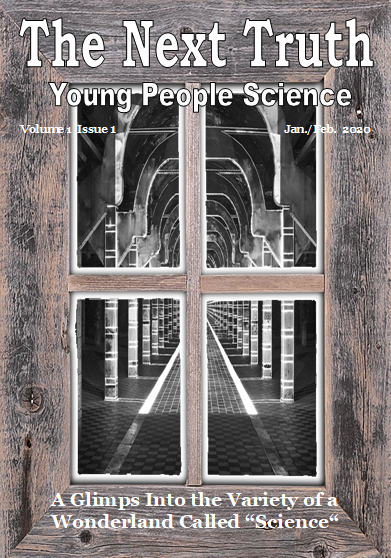
The Science and Technology of Time Travel May be Less Far-Fetched as it Sounds
By Maria Anna van Driel, www.nexttruth.com
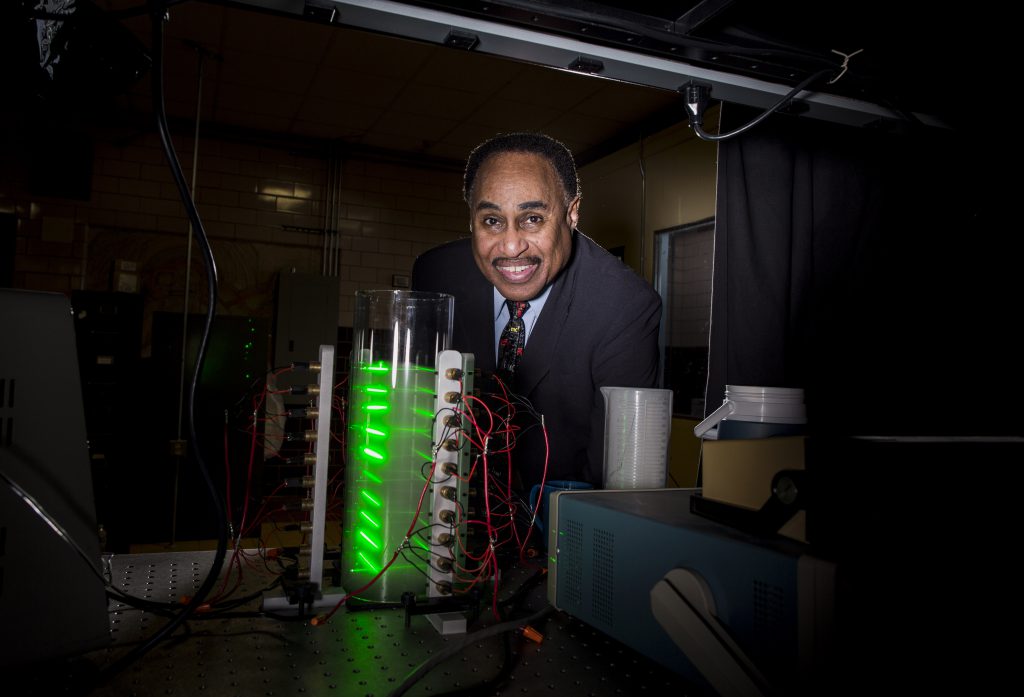
In a universe so vast, is there any hope of us traveling fast enough so that we could visit the far-off realms of space? Will we ever be able to plant a flag in the most distant quadrants of the cosmos? At this point in time we may be as far from reaching other stars as Leonardo da Vinci was from realizing an airplane but it has not stopped scientists from imagining the theoretical possibilities of interstellar travel.
Even time travel is somewhat unique in science fiction, it has long been the Holy Grail for modern science. Some say we will never be able to travel in time, while others believe we are close to achieving the impossible. But what if time travel already exists? According to general relativity – this might actually work. However, when it comes to our understanding of the Universe, general relativity may not be the final word. Theoretical physicist and Professor Emeritus Ronald L. Mallett says there is another way what makes traveling into the past a real option.
“In Einstein’s theory not only matter can create gravity but light itself can create gravity, explains Professor Mallett during the awe-inspiring Skype interview I had with him on the 4th of November 2019. “Even though light does not have matter, it has energy what can create gravity. And that is where my breakthrough is based on. If gravity can affect time and light can create gravity, then light can affect time.”
Although the concept of travelling in time via mechanical means was first popularized more than a century ago in 1895 by HG Wells’ novel “The Time Machine”, which was the first novel what inspired the young Ronald Lawrence Mallett to explore the mind-boggling scientific possibilities of time travel, Prof. Mallett has yet not published a description of a full scale version of his device of which the technology is based upon a ring laser’s properties in the context of Einstein’s general theory of relativity. But he has agreed with his critics that to distort space-time, to the necessary degree, would require a huge amount of energy, like stellar quantities.
“Unfortunately, no matter how fast you will travel, you cannot travel back into the past”, Prof. Mallett explains.The light barrier keeps us from going faster than the speed of light (c). Straightforward, the problem lies in the energy barrier. Einstein’s equation E=mc2 shows that matter and energy is equivalent to each other. When you have a small amount of matter you can create a large amount of energy. If you have enough amount of energy you can create mass. But the equation works the other way too.“
Nowadays, Prof. Mallett, who is an expert on Albert Einstein’s theories, still insists that time travel could become a reality.
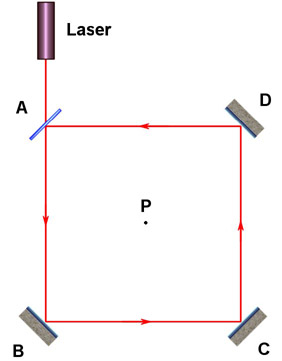
Is time travel feasible? Did we already tackle the energy barrier and jumped through time and created new universe branches out into the future? And is there is a possibility that something has been done in the present, that a laser optical time machine and receiver transmitter (LOTART), described by Professor Mallett in his book “Time Traveler: A Scientist’s Personal Mission To Make Time Travel A Reality”, will still exist in the future?
To gain a better insight in both the rules which govern time travel and whether time travel is possible and not just the stuff of science fiction, I reached out to contact time travel specialist Professor Ronald L. Mallett and gained the privilege to meet him via a Skype conversation.
*You can read Prof. Ronald. L. Mallett’s full interview in December 2019 issue of The Next Truth, https://www.magcloud.com/browse/magazine/1512517
*For the jaw-dropping concept of travelling through time and Prof. Ronald L. Mallett’s incredible research I can recommend the You Tube documentary “The World’s First Time Machine” in where he explains his theories on time travel and the journey that led him to his field of research.
[Top]Inspiring Technology That Came from Copying Nature
By Maria Anna van Driel, www.nexttruth.com

The natural world is full of incredible feats of engineering and well-adapted structures and materials honed to near perfection over geological time through natural selection. Given nature has the benefit of millions of years of trial resulting in tackling problems such as self-healing abilities, environmental exposure tolerance and resistance, hydrophobicity, self-assembly, and harnessing solar energy, it is logical that human construction can benefit in drawing from its influence.
The Pyramids, skyscrapers, airplanes, the electrical car, and Velcro tape…believe it, or not, some of the tools, vehicles, and products that you see, and use, on a daily basis have been inspired by animals and nature, innovations that have changed the world for the better and have made your life a little bit easier.
The modern concept of the robot began to be developed with the onset of the Industrial Revolution but despite the incredible ingenuity and engineering ability we have demonstrated during our existence, we are continually looking for new inspiration and ways to improve our designs so that we can manufacture our own versions of these biological marvels.
This approach to human innovation, via emulating nature, is called “biomimetic design” and has inspired many of our greatest creations. In short, biomimicry is the process of taking the innovations that exist in nature and applying them to technology. It seems that nature has a solution for almost everything.
“Looking at the engineering of nature, there is no creature born with wheels what makes the contemporary wheels exploration based robots lesser in its effectiveness when reconnoiter unknown environments. That’s why we selected an eight legged robotic device which is meant for exploration of extraterrestrial objects like asteroids,” Assistant Professor Iztok Kramberger, PhD, explained The Next Truth magazine during an interview at the Space Tech Expo 2019 in Bremen, Germany.
Electrical engineer Ass. Prof. Iztok Kramberger (47) is heading the Laboratory for Electronic and Information System at the Faculty of Electrical Engineering and Computer Science at the University of Maribor and is the mastermind of a spider-looking-like robot ‘SARA’ (Slovenian Arachnid Robot Adventurer) from both an artistic point of view and a hardware engineering point of view.
SARA (Slovenian Arachnid Robot Adventurer) is still in the phase of being a prototype but the unbeatable get-up-and-go mentality of the researchers from the Slovenian research institute Skylabs pushed them in working day and night on the complex electronics of this incredible spider robot, what is based on a biomimetic design, for the past 7 years. SARA’s skeleton construction is nature inspired and its algorithms for the optimization of the structures and, when completely stretched, has a diameter that can reach over 2 meters.
“The joint ratios of SARA have been evolved from Theraphosidae spiders, where the central body is more or less an oval form with a larger diameter of 40 centimetre. Each leg, when stretched fully, measures up to 90 centimetre. Nevertheless, it is not all about its dimensions as it can be scaled to an applicable size using more or less same intelligence,” Ass. Prof. Kramberger said.
Still, even the scientific research conducted in the field of electronics and communication technologies at Skylabs, have been pushing the boundaries in the art and science of designing and building an amazing biomimetic apparatus since 2012, some technological and funding setbacks what, to a small degree, prevented SARA’s progress, where for Ass. Prof. Kramberger and his team no unusual experience. These setbacks where not forming a solid brick wall for the researches at Skylabs, it encouraged them to focus on evolving and improving the project even more.
“There were and are still several problems to be solved before SARA will be able to walk nature wise and completely autonomous. One of the challenges were to construct an appropriate skeleton and to solve the control by a fully distributed data handling system, while consuming lots of energy remains an issue,” Ass. Prof. Kramberger explains later in an email.
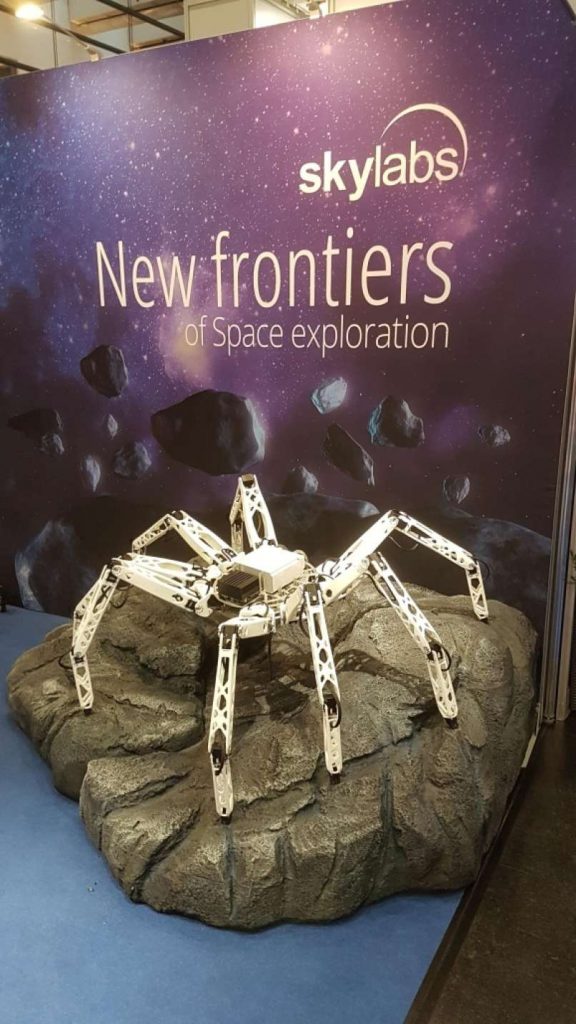
Photo credits: Skylabs
To address the second challenge of congenital natural movements Skylabs research team focused on distributed control algorithms using a fully distributed data handling system being based on SkyLabs’ PicoSkyFT technology.
“PicoSkyFT, Ass. Prof. Kramberger continues, is an ultra-small and high performance Fault Tolerant microcontroller processing core what provides the capability to integrate the control intelligence into all joints and interaction sensors of the platform giving it the ability of fully synchronous control operation. Merge it with the central Artificial Intelligence or the main brain of SARA, including additional imaging sensors for environmental awareness, we get a completely autonomous legged walker.”
The third biggest challenge, so explained Prof Kramberger, is the power consumption. While comparing it to general rovers the power consumption is much bigger.
On the strength of the torrent of ideas and experiments Skylabs researchers have run over the past 7 years with robots whose appearance has nothing in common with those as though of as if they came from the dollar store and flap their little arms like beetles stuck on their backs, the spider-looking-like robot SARA can move through rough terrain effortless. Also, its communication skills is pointing toward a connection with any known wireless technology ranging from personal area networks to wide area networks and is tested in an, by Skylabs created, environment, similar to that of Mars, for a future swarm based exploration of extra-terrestrial bodies.
“The selection of the wireless communication technology depends on the target application,” As. Prof. Kramberger continues to write in his mail. “When discussing swarm based exploration missions we are combining the developments SkyLabs’ inter-satellite communication modules providing robust and Fault Tolerant communication between the devices and an orbital gateway like the Moon Gateway.”
Currently the research team from the Slovenian institute Skylabs is developing SARA’s head which will be full of cameras in order for the biomimetic apparatus to scan its environment in a similar manner as natural evolved spiders can. When asking Ass. Prof. Kramberger if he has calculated the possibility for his eight legged spider robot to undergo an evolution in behavior through machine learning and therefore gains the capability to act territorial as real animals do in nature, he assured us that a though as such lies more in the realm of science fiction.
“We are targeting SARA’s first unmanned mission to an extra-terrestrial body like the moon providing more deep autonomous swarm based exploration by putting several interlinked devices to Moon acting as robot based population but AI can only be as smart as people are. They can be faster but will posses not more intelligence,” Ass. Prof. Kramberger responded.
It seems that these incredible robots of the future are going to be the best possible user interface for, among others, AGI systems to interact with humans and interact with the world. But AI will not be restricted to biomimetic designed robots. AI will “live” in all sorts of embedded devices and the Internet of Things. It will go into space and down to the bottom of the ocean before we humans will physically set foot on the surface of a new moon or planet. We need to have some data about its environment first what is a logical line of thought. A pre-exploration with low-cost biomemitec designed robots, which do not require water and converts sunlight into energy, is by far the safest way in assisting research institutes like ESA, NASA, Roscosmos, JAXA and CSA, for example, and guiding future astronauts during their deep space missions.
Indeed, it’s been an uphill struggle for decades but robots and artificial intelligence (AI), scary as it sounds, has become part of the furniture in engineering and our daily activities and researchers are rapidly learning how to control these biomimetic systems so that they function in a manner similar to swarms of bees or colonies of ants while exploring any new terrain which is out there in the cosmic freezer but yet unknown to us.
For more information on Skylabs and SARA: www.skylabs.si

[Top]
January 2020 Issue – Out Now!

First of all, Happy New Year everyone and a fantastic 2020! Secondly…the first issue of this year is available online. Thank you for contributing and I hope you enjoy this month’s issue.
Never Miss An Issue Of The Next Truth Magazine. https://www.magcloud.com/browse/magazine/1512517
In the January issue of The Next Truth aspiring astronaut, and advocate of STEM, Abigail Harrison portrays her amazing experience in meeting the living legend Dr. Mae Jemison, Prof. Andrew George elucidate why it is that science needs myths to thrive, author and shaman Tony Damian is taking us on a spellbinding journey to his past life, Dr. Hendra Kesuma weighs in on WLAN’s Competitor: beyond 5G light communicationsand Ass. Prof. Iztok Kramberger reveals the latest developments of his biomimetic spider-looking apparatus SARA
Also in this issue: Dr. Daniel Brown discusses if prehistoric people where astronomers, Nadjejda Vicente describes her personal experience of exploring the hostile environment of caves with ESA astronaut Alexander Gerst, we spotlight PRI-UK’s paranormal researcher Nick Terrell, we peer into an excited future of companion robots with Dr. Adeline Chanseau, Author Lynn Russell is adding a little pizzazz to the link of our happiness and Quantum particles and Dr. Seth Shostak argues if intelligent extraterrestrials might have far more advanced telescopes.
